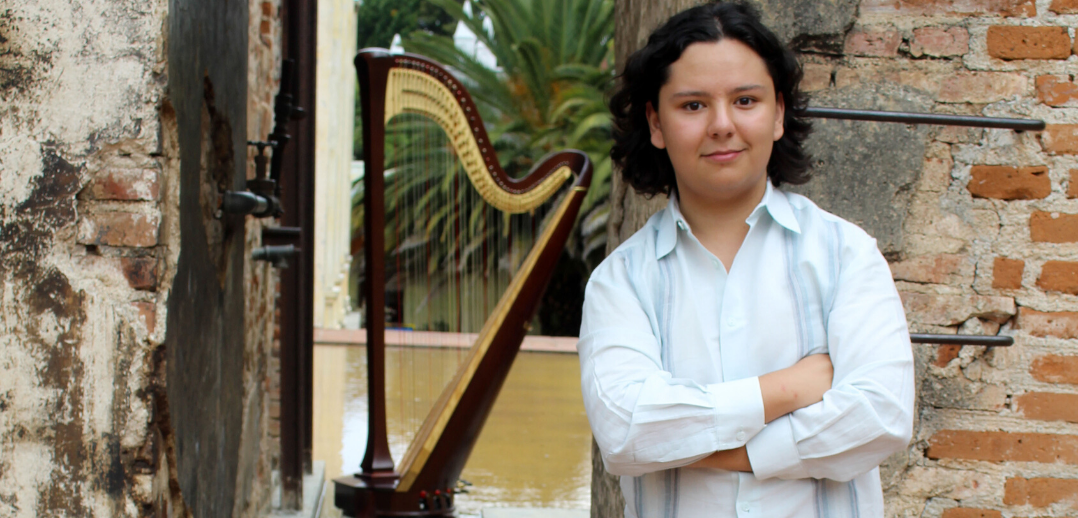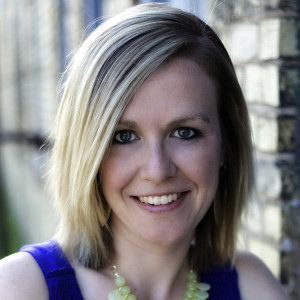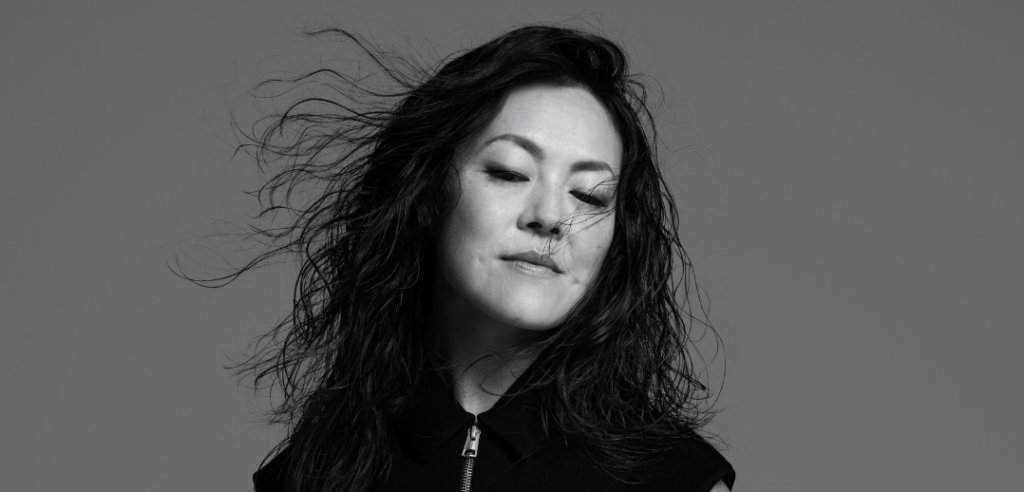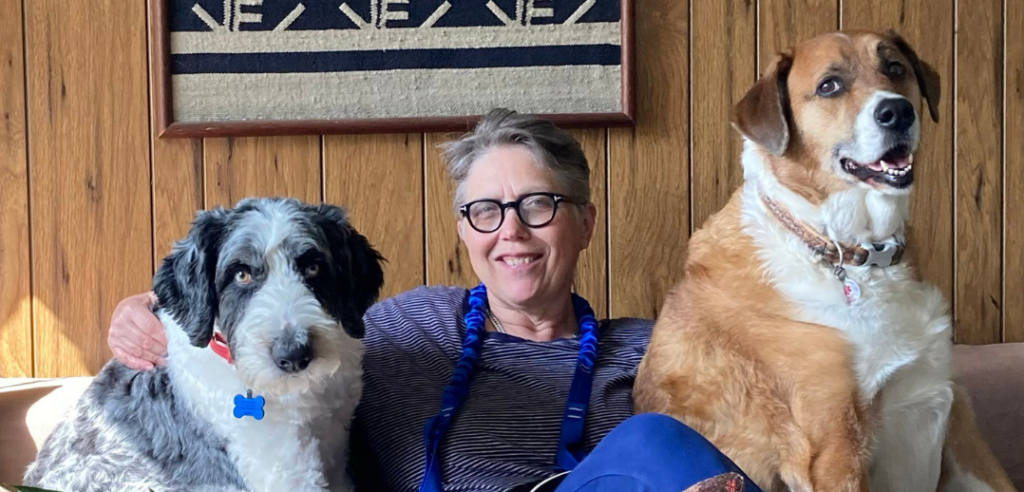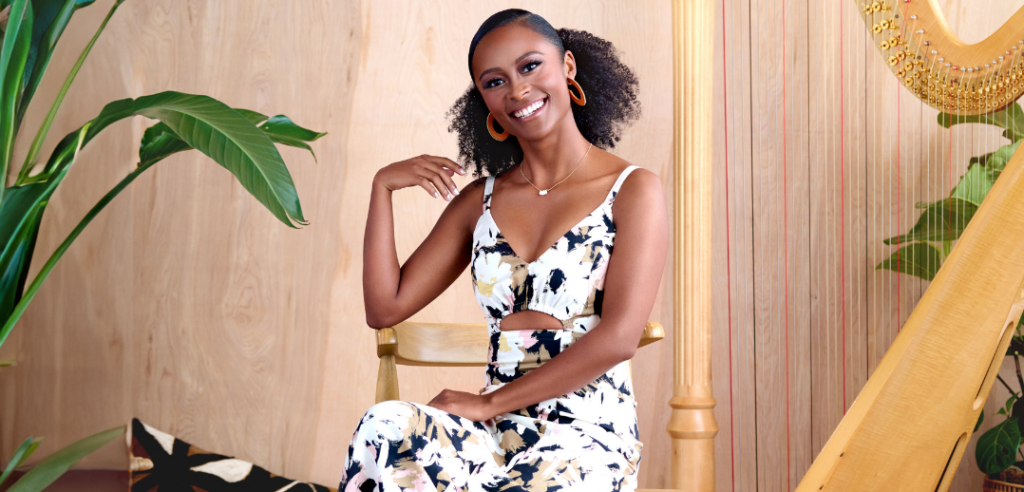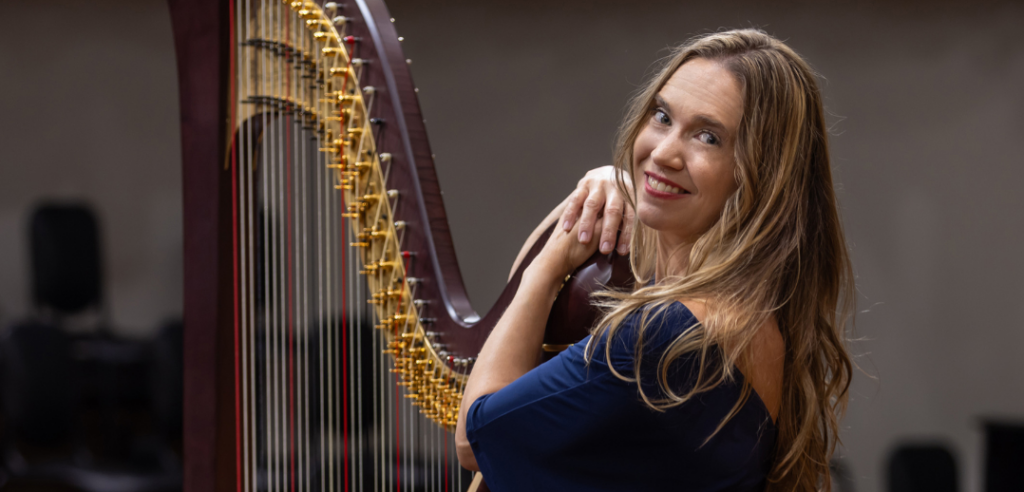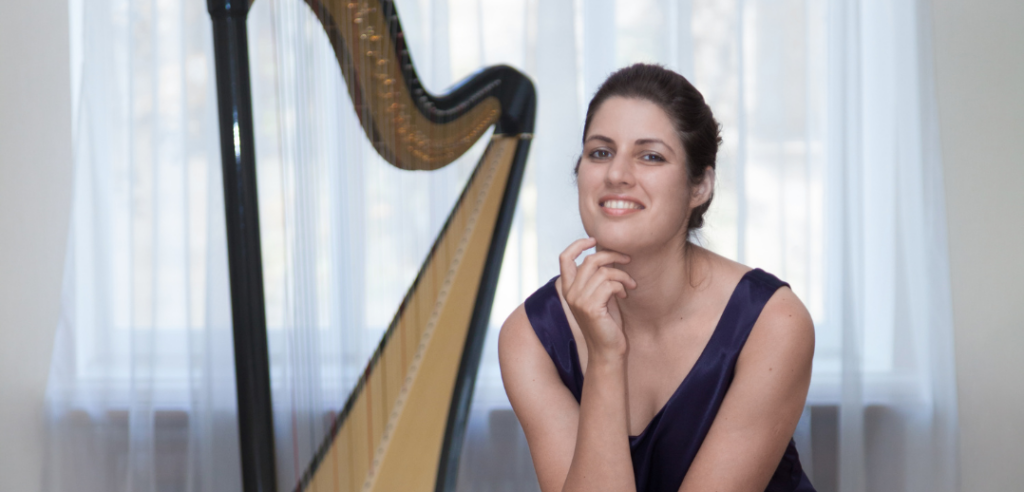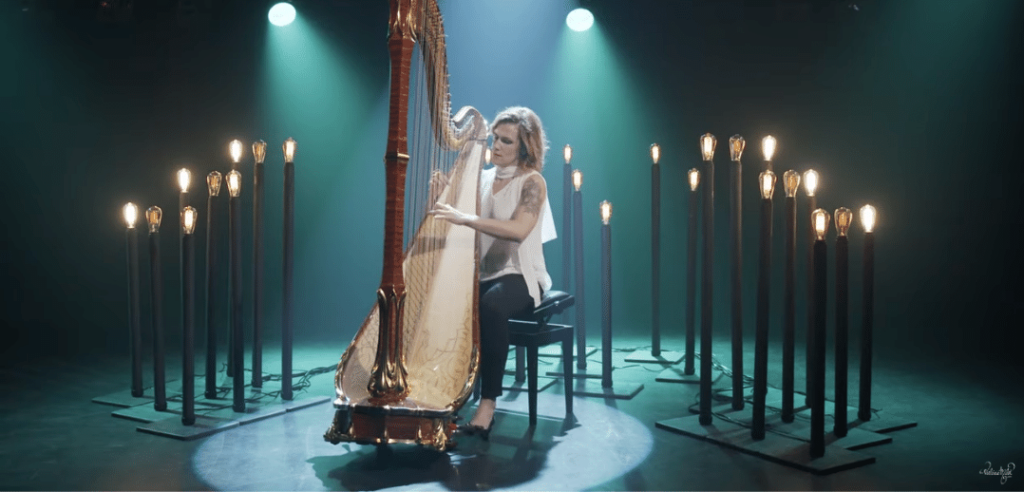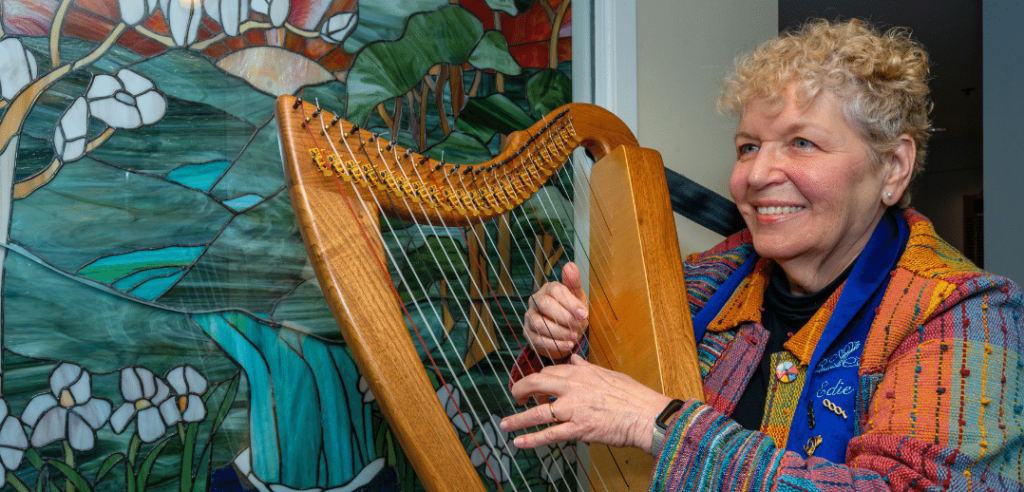In 2016, Mexican harpist Emmanuel Padilla Hoguín became the first Latin American harpist to win a major international harp competition when he took first prize at the Dutch Harp Competition (now called the World Harp Competition). He also won the top prize at the Mexico International Harp Competition the same year. Padilla was just 22 years old, but the baby-faced phenom was just getting started. Having begun his harp studies with Baltazar Juarez in Mexico City, Padilla then went on to earn his bachelor’s degree from Indiana University, and is earning his master’s degree and artist diploma from the Norwegian Music Academy in Oslo. When we caught up with Padilla, he was looking forward to returning home for good. He had just won a position with the Concertantes de la Bellas Artes—a prestigious group of solo performing artists in his hometown of Mexico City.

Harp Column: What did winning the Dutch Harp Competition mean for you?
Emmanuel Padilla Holguín: For me personally, I was incredibly happy about it for a few different reasons. First, because it impacted some choices I made that year. For the better part of two years I had been preparing for the 2016 Bloomington competition [the USA International Harp Competition]. I had all the rep ready. But then the repertoire came out for the Dutch competition, and I think it was the only moment in my life that I saw the concept for a competition—not just the repertoire, but the concept, the intentions—and I was genuinely excited about it.
HC: For our readers who might not know about the Dutch Harp Festival’s World Harp Competition, tell them what makes this competition different from others that got you so excited.
EPH: It happens every two years, but each time it is completely different. When I did it, it was the last edition that was focused on academic music. It was just so amazing because in the first round they asked for the Berio Sequenza and a free choice—that’s it. They were saying, “We want to hear something by you, something that shows your own personality, but we also want to hear you play this academic music to see if you can do it.” Then the second round was completely free choice, but they encourage you to have a program so that it makes sense, and to write program notes, and to tell a story with your program. In the final it was the Handel Concerto, but you had to write your own cadenza. So it was a different kind of challenge that forced you to be creative. Also in the final, there was a triple concerto for three harps and orchestra and the three finalists played together. So you were in a competition, but these people are harpists like you and you have to relax and collaborate. It was a really cool message, just seeing it on the rep list. In general there was a lot of freedom, even though there were some guidelines. I loved that, and I thought, yeah, I’m doing this. But I realized I couldn’t do both Bloomington and the Dutch competition in terms of time and everything, so I decided to do the Dutch competition because I was just really excited about it, and I should follow my heart in those types of decisions.
Making Mexican Music
Emmanuel Padilla Hoguín has released two albums, both of which consist entirely of music from Mexican composers.

Cielo rojo: Mexican Harp Music from Three Centuries (2015) 
Obra Completa para Arpa de Mario Ruiz Armengol (2017)
HC: Right, which isn’t always easy to do.
EPH: Yes, especially because at the time I was studying with Susann McDonald in Bloomington, so it was a difficult decision. But in the end it was worth it because I had a lot of fun playing and I eventually won.
HC: One thing I think is fascinating about you is how equally well versed you are in both classical music and the folk and traditional music of your culture. How have you been able to do both at such a high level.
EPH: Unlike many other Latin American classical harpists, I started to get into traditional music, folk music, and popular music much later than I got into classical music. It’s very common for Latin American harpists to start out playing the traditional harp—like in Mexico the jarocha harp or in Venezuela the llanera harp—before studying classical harp. That wasn’t my taste at all. I was always a classical music player, but maybe since 2014, I’ve had this curiosity and interest to play traditional music.
HC: What do you think sparked that interest?
EPH: I’m not completely sure, but I think something important to me was this Latin American music ensemble we had at Indiana University. There was a director who arranged music from Mexico, Brazil, Cuba, Colombia, Venezuela, Peru to whatever instruments they had that semester. It was technically a class. So I think that’s when it started for me.
HC: That’s interesting—you developed this interest in traditional Latin American music after leaving Latin America.
EPH: Yes, and my interest in it also skyrocketed after winning the Dutch competition. I had this 10,000 Euro prize for career development. They said to me, “Tell us what kind of projects you aspire to do, what kinds of things you still want to learn that maybe you cannot do at your current school or with your current teacher, and we will make them happen, whatever it is.” So it took me a month to come up with what I really wanted to do. I decided to use the prize to study traditional Latin American music. I went to Cuba to study with a pianist there to learn about specific genres of Cuban music. And then I went to Buenos Aires and did the same thing—I studied the tango with a pianist there.
HC: Let’s back up a little bit to the beginning of your harp story. How did you come to this instrument?
EPH: My dad put my sister and me in a music school for kids. It basically started with kindergarten, but with music. They don’t just teach you music—you are surrounded by it. When you are 6 years old, you get to choose an instrument. I remember I tried the violin, flute, piano, harp, and they were fine, but none of them were really special to me. My sister really liked the harp, so I said, okay, I’ll just do the same as her. Now my sister is a computer engineer, and here I am! [Laughs] It wasn’t one of those stories you hear where there was a moment I just knew this was the instrument. That wasn’t me. But I like to think it’s a little like love. I don’t believe in love at first sight, but when you get to know the person, you fall in love.
HC: Let’s jump forward to today. You were just named to a prestigious performing artist group in Mexico, Concertantes de la Bellas Artes. Tell us about the group.
EPH: It’s a really cool thing. The translation would be something like “group of soloists of the Fine Arts Institute.” We have the Fine Arts National Institute—it has the Fine Arts Palace, which is the most iconic concert hall in Mexico. It oversees a national symphony, the opera, the ballet—there are many things it does. They have this group of soloists that is not an orchestra, not an ensemble. It’s a group of musicians that does concerts on their own and sometimes they do chamber music, and it is showcased as the best of each instrument in the country. The interesting part about it is that it is a steady job, and it is a job for life. It’s incredible in that it gives me complete freedom in how I use my time.
HC: Are you the only harpist in the group?
EPH: Yes, the first and only.
HC: Congratulations! You must have been thrilled.
EPH: Thank you. Even hearing that the position was open to a harpist was incredible, even if I didn’t get it, because there aren’t many jobs.
HC: What was the audition process like for the position?
EPH: It was tough. They purposely give you just one month to prepare. They asked for the Mozart Concerto [for Flute and Harp], and you have to find the flutist and the pianist, Féerie by Tournier, the Sonatine en Trio by Ravel, and then a half-hour of free choices, but they had to be pieces originally written for the harp.
HC: So you had one month to prepare all of this?
EPH: Yes, and in my case, I had never played the Mozart, never played Féerie, never played the Ravel.
HC: Was this audition open to anyone? Were there residency requirements?
EPH: It was open to Mexican harpists and also foreigners living in Mexico. There were two harpists who auditioned—one from Germany and one from the U.S.—who were already living here for other jobs.
HC: Wow, well that’s quite an audition.
EPH: I saw it the day the repertoire was announced, and I thought about it because it was a lot of music. But then it didn’t take me long to realize I have to try it. It’s not like jobs are popping up everywhere all the time.
HC: The timing in winning this job couldn’t have been better for you, since you are just finishing your degree program this spring at the Norwegian Academy of Music.
EPH: Well, it could have been a little better. [Laughs] The problem is that the job has a trial period, and right now I’m in my trial period and I’m finishing my degree program. I have to do six concerts in Mexico City between January and June, so I am going back and forth a lot. But it’s worth it because, of course, I have job security and I have to finish my degree. [See editor’s note at the end of the article.]
HC: In your job, how much freedom do you have in choosing the music you play?
EPH: The repertoire is basically up to me. You just cannot repeat rep very often. So if I play something now, I shouldn’t play it again for several years. But there is a lot of freedom other than that.
HC: You’ve recorded two albums, both featuring music by Mexican composers. What do you want listeners who might not be familiar with this music to know about the music of Mexico?
EPH: I want people to know that it is just as rich as the music of any other country in the world in every way—its academic music, its traditional music, its popular music. I knew there was a lot of Mexican music written for the pedal harp, but when I started to dig and do some research, it was so much more than I thought. So even myself, having grown up and studied in Mexico until I was 19, had no idea how much there was. That was my intention, especially with my first CD. My idea was to do a timeline of the pedal harp in Mexico. So I included the first piece written by a Mexican composer for the pedal harp, which was in 1872, and then the music that was written after that.
HC: What do you love about this music?
EPH: It’s very diverse. If you listen to [the album], there is no theme, other than it is Mexican music. Musically, they are very different pieces.
HC: I understand you are working on a new CD that involves some singing and storytelling.
EPH: Yes, I’ve done a little bit in recent concerts in the last two years. I don’t have a good voice, but I like singing. So I’m trying to see what works. I’m poking around, but I like the idea of using the harp to accompany traditional songs because it’s an instrument, like the guitar, that has been used that way for centuries in many countries.
HC: You left Mexico to pursue your bachelor’s and master’s degrees, but until you left, you had studied classical music in Mexico with Baltazar Juarez. Was there anything that surprised you in the different ways of studying music in the United States and in Norway?
EPH: The three places are incredibly different in many ways. The main thing at Indiana was the academic education—musically and otherwise. That’s where I got my strongest background in theory and everything. I don’t think I changed much harpistically from Mexico to Indiana—they aren’t very different in the type of teaching between Baltazar and Ms. McDonald.
HC: Well, that makes sense, with Baltazar having studied with Ms. McDonald at Indiana.
EPH: But going to Norway felt upside down. At Indiana I learned much more about music than the harp, but in Norway, it was the opposite. The school is more relaxed, but Isabelle [Perrin] is so not relaxed. But I’m so thankful for that. It is why I came here; I knew what I was getting into. [Laughs] She is a wonderful teacher. She taught me another way of thinking about the harp. The schoolwork is completely different, though. It’s a very interesting system. For a class, you might choose four out of 10 times the class meets for the semester and go. I felt like I was doing almost nothing compared to what I did at Indiana. Here, most days the only thing the school requires of me is that I go practice. It was very surprising how different the system was than in the U.S. and Mexico—those two are very similar academically.
HC: As you are coming to the end of your schooling and transitioning into your professional career, you’ve already accomplished so much. Where do you want to go from here?
EPH: I don’t dare anymore to make plans and marry them because every time I have in the past, what I planned didn’t happen. But I’m thankful for that because something else happened that I love. Six months or so before I went to Norway, I never would have dreamed I’d live in Norway, but now I am. Plans change, and I think usually for the better. But I can tell you I want to keep making music. What I really love to do, I know now, involves Latin American music. Maybe in the future it will involve more singing. I love to improvise, but I also love to work for months on a classical piece.
HC: And you have the training and the skills to go in any direction you want.
EPH: Yes, that’s a good thing. Now I have this job that gives me so much freedom. I’d love to play in an orchestra at some point. I love the feeling the orchestra gives you of being a part of something bigger than yourself. I’d also love to start teaching. One thing I definitely want to pursue is making a Latin American harpist association. There are so many talented people, and there is so much happening on the local level in all these countries. I think it’s something we really need. •
Getting to know Emmanuel
On my music stand right now: The Bach Concerto for Two Harpsichords in C Minor, Tournier’s Sonatine, and a piece by Liszt called Bénédiction de Dieu dans la solitude, ‘The Blessing of God in Solitude’—it’s an arrangement that Sylvain Blassel did. It’s an amazing piece. It’s one movement, 18 or 20 minutes long. It’s really cool, and it’s really hard, so it’s been on my music stand for a while.
What I’m listening to right now: A CD by Hélène Breschand called Pandore. It’s amazing—I love it.
Favorite smartphone app: I think it has to be Spotify.
My harp: I have a Lyon & Healy 30.
If I were not a harpist: For a long time I thought I would study political science. I don’t think I would have been a politician, but I’ve always been interested in political science. Lately I’ve also been very interested in cinematography.
Favorite piece: I love the Casella Sonata, and for a traditional piece, La Llorana—‘The Weeping Woman.’ It’s my go-to piece when I just want to play and improvise.
The thing I love about the harp: The feeling of playing it, in the sense of having direct contact with the strings and that you are kind of hugging it. I love the fact that it’s such an intimate instrument.
The thing that drives me nuts about the harp: Moving it.
When I’m not playing the harp: I love to play and watch soccer. It’s difficult [to play] here in Norway with so much snow, but that’s something I’m looking forward to back in Mexico.
Ed.—We asked Emmanuel for an update about his situation since so much has changed since we talked the first week of March. He says he is in Mexico now, with his family. He’s been practicing at home, having Zoom lessons with his teacher in Oslo, and doing short harp videos in his new position, for the organization’s social media. With a laugh and a smile, he points out that this is the perfect example of things not working out the way you planned.






